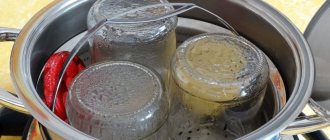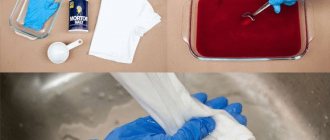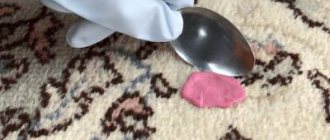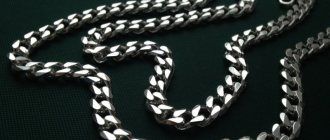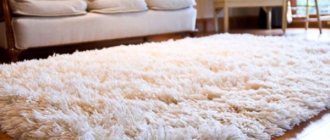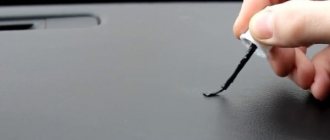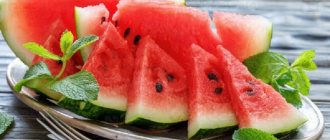Snowflakes for windows: Needpix Snowflakes on the windows are part of the New Year's decor. How to properly attach openwork decorations so that you can remove them without problems after the holidays? Choose the appropriate method of attaching to glass and create a winter fairy tale with the help of carved snowflakes.
What to use to glue snowflakes on windows? New Year's decor is glued to glass with laundry soap, detergents, water, milk, toothpaste, paste, glue, tape, egg white.
How to attach paper snowflakes to windows? Depending on the type of adhesive, the decor is glued to windows in different ways: applied to the entire back side of the product, outlined, dotted along the silhouette and lintels. Volumetric and weighted snowflakes are attached to one or several pieces of double-sided tape or glue.
Glue paper snowflakes to the window without tape
With the onset of winter, there is a desire to decorate the house for the New Year holidays. The most budget option is various decorations made from ordinary stationery paper. You can, for example, cut out such decorations of various shapes, sizes and with interesting patterns. To stick them to the window without using tape, you can use soap, toothpaste, flour or even milk. In the next part of the article, these and other methods will be described in detail.
How to glue snowflakes from napkins to a window
Decorations can be made not only from paper, but also from napkins. In this version, even napkins with New Year-themed patterns will look interesting. Schemes for cutting out snowflakes can be easily found on the Internet. One of the advantages of this material is its lightness.
Thanks to this, to glue the decor to the glass surface, you can use any of the options presented below (milk, water, toothpaste, flour, soap, PVA glue). They must be coated with the selected material on one side and applied to the window. After drying, the product will adhere firmly to the glass, and to remove it you will need to thoroughly wash the window using a special glass cleaner.
What types of adhesive tapes are suitable?
There are many types of adhesive tapes, but not all of them are suitable for insulating windows. Adhesive tapes acceptable for these purposes include :
- clerical;
- painting;
- reinforced;
- metallized;
- packaging
It is also worth noting double-sided tape, which can be creatively used for gluing decorations when insulating windows.
Regular stationery
Its use is advisable only if there is no other alternative and if it is necessary to solve the problem with drafts at least partially. This is due to the inherent disadvantages :
- Careful pre-treatment of the surface of the structure is required.
- Doesn't stick well to both plastic and wood.
- In case of strong drafts, it will come off in 1-3 days.
Note. The only advantages of this type of tape are its availability and low price.
Painter
Another cheap and affordable option that is more suitable for sealing cracks.
It is considered the “successor” of the old method of insulating windows - using papers or newspapers. Mainly used in conjunction with cotton wool or foam rubber , which is used to seal cracks.
Among the disadvantages, it is worth noting the fragility of the design. Although it can be used on most surfaces, masking tape still has relatively little stickiness.
Reinforced
It is not used as often as the painting option due to its high cost and specificity. The tape is also called plumbing tape. The advantages worth highlighting are :
- The material consists of a PVC base and reinforced fabric fibers, which ensures strength.
- The top layer is made of polyethylene, which makes it waterproof.
- Has high adhesiveness.
Note. This option is recommended by experts for sealing cracks and seams.
Metallized
High strength and wear resistance. You won’t be able to find such a tape in regular stores—you’ll have to go to specialized stores. Rarely used due to the availability of other alternatives.
Packaging
The main advantage is the high degree of adhesiveness .
However, this can also be called a disadvantage - when using adhesive tape on a painted surface, there is a possibility of damaging the paint layer when removing the material.
Therefore, it is recommended to use only on plastic windows.
Double sided
The advantage of such a tape is its greater thickness than other types , which is important for insulation. It has high adhesiveness, but strength may fail. The adhesive second side can be used to reinforce the structure or to decorate it.
Soap gluing option
Using soap pre-dissolved in warm water, you can attach even the heaviest and most voluminous decorations to windows and mirrors.
This method is also suitable for simple paper products. Any soap (bar or liquid) must be dissolved in warm water. You should get a saturated solution. The concentration can be determined by tactile sensations: if a visible film remains on your hands that cannot be washed off immediately, it means that there is already enough soap in the solution.
Apply the prepared “glue” to a dishwashing sponge or a fluffy brush, lightly moisten the snowflake and stick it to the glass. In this way, you can secure not only paper decorations, but also, for example, knitted fabric. Remains of the solution and dripping drops can be removed with a damp cloth. If you don't have enough cloth, you can use glass cleaner.
Soap or soap solution
Soap is an effective method for gluing paper snowflakes to glass. It is necessary to grind the soap using a grater and add a small amount of warm water. Treat the back side of the snowflake with the resulting mixture and glue it to the window. Excess soap solution must be removed with a soft cloth.
In addition to bar soap, you can use liquid soap, shower gel or shampoo. After using this product, removing soap residue is quite easy. Can be used to attach snowflakes made from napkins or loose paper.
Without tape and glue
The easiest and most common way to attach decorative paper snowflakes to windows are those that use tape or PVA glue. But you can do without them. It’s really possible to stick New Year’s decor to the window using the tools that every home has. For example, soap solution, milk toothpaste, mixture with starch or plain water.
If the product is deformed or wrinkled, you need to very carefully move its elements by hand. It is not necessary to completely wash the window after finishing; you can leave the paste in the form of beautiful patterns. If you need to partially wash the glass, you can use regular shampoo or glass cleaner.
Causes
Having noticed the windows blowing, you should understand the causes of the problem. Having found out the reason, it is worth thinking about eliminating it.
Poor quality installation
Violation of installation rules often leads to thermal insulation problems. As a rule, blowing occurs as a result of self-installation of window structures.
House shrinkage
When the house shrinks, individual elements adjacent to the windows shift. The result of shrinkage is the formation of gaps and large cracks.
Saving
By saving on window construction, you have to sacrifice quality. Often, cheap windows create problems in terms of heat retention.
Seal wear
With prolonged use, the rubber seals on the windows wear out, resulting in air entering the room. The solution to the problem is to replace the seal.
Ignoring operating rules
Neglecting standard rules for using windows leads to defects. In addition, the service life of the structure is reduced.
Water and milk
This method is suitable if small children are involved in the process of decorating windows. They love to taste everything, and regular milk will not harm them in any way. It is better to glue light snowflakes on the windows, and both the room and the baby will be clean. Large items made of thick paper or velvet fabrics will be more difficult to attach; you will have to lubricate the item several times.
To attach them, it is better to use a mixture of flour, water and milk. In cases with light products, you need to moisten the brush in water and milk, diluted in a ratio of 1/1, and glue the snowflake to the desired surface. After drying, it will remain quite firmly attached to the glass.
Types of material
Nowadays there is quite a wide variety of different holiday decor that you can buy in a store or make with your own hands. If previously snowflakes were mainly cut out of ordinary paper with scissors, now it is possible to use different materials and methods to create them. The decor must be glued to the window, based on what was used to make it. Snowflakes for decoration can be:
- Paper, including self-adhesive paper.
- From various types of plastic.
- Made from other types of material (matches, threads, beads, fabric, etc.).
Many people now make home decor with their own hands, so there can be any number of types of decorations. The main condition for properly gluing snowflakes to glass is their lightness. In this case, they will not constantly fall off, and to strengthen them you will not have to use special strong agents.
Toothpaste
It is quite possible to stick decor to windows without stationery tape and glue, using regular toothpaste. This material is useful if you want to secure a product with a complex openwork shape, with small slots or thin edges. When it hardens on glass, the composition will turn into real frost with an imitation of the texture of real snowflakes. Even if winter doesn't create icy patterns on the glass, the windows will still look fantastic.
You need to use white paste; you can add blue shades, but not multi-colored ones. Children's shiny hygiene products look impressive.
Applying decorative paste is easy. You just need to apply a thin layer of such glue on the back side of the paper product and apply it to the glass, pressing it a little. If the paste is too thick, you can dissolve it a little in warm water. In this case, the layer will take longer to dry, but this will allow you to rearrange the decor on the glass if necessary.
What can you use for gluing?
Using products with strong adhesive properties to decorate a window can cause it to become very dirty. Then you will have to wash the window completely using strong household chemicals.
On the one hand, the decor must adhere well so as not to accidentally peel off from the glass; on the other hand, it is desirable that traces of the adhesive are easily washed off. To do this, you need to choose the best option.
You can glue different types of snowflakes to the window using the following means:
- Plain water.
- Milk.
- A solution of soap and other detergents.
- Toothpaste.
- Liquid paste.
- Various types of glue (stick, stationery, PVA, etc.).
- Scotch tape (regular, double-sided).
There are quite a lot of methods, and you can choose any one at your discretion. According to reviews from people who have used these products, they are all quite effective. The whole nuance lies in what material your snowflakes will be made of.
As a rule, an adhesive made from natural ingredients (water, milk, soap, paste) practically does not contaminate the glass and is easily washed off. Materials with an adhesive surface (adhesive paper, tape, etc.) can leave stubborn stains on the surface. The advantage of these products is that they hold the decor on the window more firmly, especially if it has a large area or is not made of paper material.
It is advisable to use products with enhanced adhesive abilities (glue, tape, etc.) for gluing snowflakes made of foam plastic, plastic, as well as crocheted or fabric ones.
Before you start decorating the window, prepare the necessary things. Place the decor on a flat surface so that it is convenient for you to take it. If all the snowflakes are different sizes, place them separately so as not to get confused while working. Prepare the adhesive (if it is a solution, dilute it in a small container).
Wipe the surface of the window with a damp cloth and let dry. This is necessary so that the adhesive interacts better with the glass. Think in advance what pattern you want to make out of snowflakes and in what order you will glue them.
Scotch tape or PVA glue
After cutting out all the snowflakes from paper or napkins, they need to be attached to the window.
An excellent method would be to use tape or PVA glue. In the first case, the adhesive tape needs to be cut into small pieces and used to attach the paper product to the window. In the second, it must be applied to the wrong side of the product using a brush or sponge. Next, carefully lean the product against the window and hold it for a few seconds for better adhesion.
If you need to remove snowflakes from a window, it is advisable to moisten the paper with glass cleaner so that there are no traces of the materials left.
Basic principles of window decoration
New Year's decor does not require special expensive tools. To properly decorate your home, you just need to follow the basic principles and success is guaranteed. Initially, you need to cut out snowflakes or other decorative elements at your discretion from paper (napkins, cardboard). The products should be leveled by placing them between two sheets of thick cardboard. The sheets are pressed with a weight and left for several days. You should take care of this in advance.
Snowflakes stick perfectly to a clean window washed with a special degreaser. Any window or dish cleaner works great. The glass is wiped dry with a rag or paper towel.
To easily attach decorative elements to the desired surface, you need to select a special adhesive composition. There are several options for this glue:
- Various types of soap
- Glue stick
- Toothpaste
- Scotch
- Milk
- Shampoo, etc.
If the snowflakes must be arranged according to a special pre-conceived pattern, then it is better to first lay it out on cardboard or paper. This will make it much easier to transfer the prepared drawing to the window.
Scotch
Double-sided or transparent tape is the simplest solution that housewives often use. Construction adhesive tape has properties similar to scotch tape. To prevent the tape from blocking the tips of the snowflakes, you need to roll it into a ring with the adhesive surface facing out. When the glass is not completely dry, it will not hold the decorations well.
Why you shouldn't use tape
The apparent ease of use has its significant drawbacks. The main disadvantage is that the tape does not hold the decor well even with the slightest moisture in the glass. It should be remembered that in winter the windows become covered with frost, snow gets on them, and they simply fog up from breathing - you should refrain from using adhesive tape. The right solution would be to attach decorations with tape away from windows, on furniture and other interior items that are less susceptible to moisture.
In artificial or excessive daylight, even perfectly applied clear tape will have an unnatural shine at certain angles.
You should also not forget that if you are not careful enough, you can leave fingerprints on it, which are clearly visible and spoil the feeling of the holiday. Using double-sided tape with an improved adhesive composition allows you not to worry about decorations coming off, but after removing the snowflakes you will spend a lot of time cleaning the windows from its traces.
Milk and water
A proven method for perfectly decorated windows is to use water and milk as an adhesive. Snowflakes made from paper napkins are lightweight and attach perfectly with just running water. In this case, it is the glass that should be moistened. It is convenient to apply water to the window using a spray bottle. Pre-prepared snowflakes or patterns are applied to the window and smoothed with a rag soaked in water. After the water has dried, the decor will remain securely on the window and will not leave marks. With the technology used, removing snowflakes is as easy as sticking them on. The edge of the snowflake is bent with a knife or fingernail, and then easily removed without leaving any unnecessary marks.
If the paper is thicker (office paper, writing paper), then milk would be the ideal solution. Depending on the size of the snowflakes, a plate is selected into which the milk is poured. There is no need to wet the figures too much; simply dip them in milk, gently moistening their entire surface. The excess liquid will drain, after which the snowflake is glued to the window and straightened with a cloth. The rest of the snowflakes are attached in a similar way. Being careful will avoid traces of milk on the window. Cleaning occurs in the same way as in the previous case. But do not forget that milk marks should be washed.
Toothpaste
Toothpaste is a universal product suitable for paper of any thickness. The paste is squeezed out of the tube into a small bowl and applied pointwise to the snowflake and the edges of its rays. When gluing the figures, you should lubricate them around the perimeter, stepping back slightly from the edges. A figurine or snowflake is placed against the window and carefully smoothed with a rag. If you apply more toothpaste than necessary during preparation, it will be squeezed out when pressed. Toothpaste stains must be removed before they dry. When the paste hardens, it can easily hold even large snowflakes and figures.
You cannot use colored paste, including those with bright multi-colored stripes. To avoid stains on snowflakes, you should choose exclusively white or neutral paste.
Jewelry is removed using a knife. The dried paste can be easily picked off the window, leaving only a small white mark that can be easily washed off with plain water.
Soap based solution
Soap is perfect as an adhesive base for snowflakes. There are several ways to glue patterns using it:
- The solution is being prepared. Soap is grated and poured with a cup of hot water. After complete dissolution, you need to apply the soap solution to the finished snowflakes, stick them on the window and smooth them with a sponge.
- When using napkins or thin paper, only the tips of the rays are dipped into the solution, after which they are fixed to the glass. Decorations made from napkins are lightweight and do not require a thick layer of glue.
- Using a bar of soap and water is a great solution for thick paper or cardboard. The snowflake is generously smeared with soap from the back side from the middle to the edges and glued. To glue more securely, you need to attach the ends of the snowflake rays to the soap. This method leaves virtually no marks on the window, since the glass is practically not stained by excess liquid.
It should be remembered that soap varieties differ from each other and have different properties. Gray laundry soap has the best adhesive properties. You should also try to avoid brightly colored soaps and prefer calm white and cream shades.
To remove snowflakes glued using the above methods, you need to wet them over the entire area. After half an hour, the soap will become soaked and removing the decor will not be difficult.
Paste
The paste recipe is simple and proven over the years—you only need a little potato starch or wheat flour. Add 1 tbsp to half a glass of flour. spoon of product. The resulting mixture is placed on the stove and brought to a boil. When the paste thickens, it should be cooled to 20-25 degrees.
It is most convenient to apply the finished paste to the snowflake using a brush. Lubricate the entire figure, then transfer the product to the glass and, without waiting for the glue to dry, press firmly with a sponge. The paste takes quite a long time to dry, but you can use a regular hairdryer to speed up the drying.
Snowflakes glued to the paste are removed using a sprayer as follows: the surface of the paper is moistened enough to soak the adhesive layer. After half an hour, the decor can be easily removed with a knife and a damp sponge. The window is easy to clean from traces of flour or starch.
Starch and flour are safe substances for children; it is permissible to fearlessly involve children in decorating windows.
Glue
You should never use glue with a complex composition, such as Super-moment or PVA - they leave marks that are difficult to remove. The safest and most reliable are adhesive stick and transparent stationery glue. Smear the snowflake with a pencil and press it tightly against the glass with a rag. Office glue is applied with a brush over the entire area of the product. Next, you need to attach the snowflake to the glass and straighten it with a soft sponge.
After the holidays, snowflakes can be easily removed by generously moistening them with a spray bottle. Afterwards, you should wash the window with water and a small amount of detergent.
Egg white
Protein is a natural remedy, reliable and safe. This method of covering windows has been known all over the world for several centuries. Perfect for all types of paper. The technology is quite simple - the egg white is whipped into foam and carefully applied to the edges of the snowflake. Then the decoration is transferred to the glass, after which it is rubbed with a rag.
Glued snowflakes need to be wet for about half an hour, after which they can be easily removed. Protein glue leaves almost no traces. Even if the glass is slightly dirty, it can be easily washed with water and a little soap.
Detergents
The principle of action of shampoo, liquid soap or dish soap is similar to the technology of gluing onto soap diluted in water. It should be remembered that these liquids are quite dense and, after drying, will perfectly hold the prepared patterns and snowflakes on the window. The detergent should be applied to the window either in a continuous layer or in fragments. It must be remembered that the thicker the paper chosen, the more abundantly the adhesive base needs to be applied to it. After gluing, each snowflake is pressed with a sponge and leveled.
Each detergent dissolves easily in water. Consequently, there will be no marks left on the glass and there should be no problems with removing the decor.
Clayster
One of the ways to attach winter decor to windows is paste. It consists of potato or corn starch, water and flour. For 50 milliliters of liquid, add 2 tablespoons of flour and starch. Next, the slurry needs to be mixed well so that no lumps form. After this, add all this to 200 milliliters of hot water and simmer for several minutes until thickened.
After the mass has cooled, it can be used in the same way as regular purchased PVA glue. The disadvantage of this method may be streaks on the window, but after the snowflake has completely dried, unnecessary patterns can be removed with a damp towel.
Flour with water
This method is also perfect for using with children. To prepare it you will need 2 components: regular wheat flour and warm water.
The composition must be diluted to the consistency of regular PVA glue. The mixture should not be too liquid and without lumps, homogeneous. It should be applied to paper, not glass; it is advisable to use a brush so as not to overdo it with moisture.
After the holiday is over, it is enough to wash the entire surface of the window with a sponge soaked in clean water. Next, wait until the paste dissolves and remove all the paper from the glass. This product will not leave any marks on glass or mirror.
Insulation of plastic structures
The main reason for blowing plastic is the drying out of rubber seals. But heat loss in the room can also occur due to faulty fittings, cracks in the slopes, or skewed sashes. For insulation, you need to use modern materials that will fit tightly to the structure. Such insulation materials include:
- masking tape for windows;
- foam-based tapes;
- window putty;
- reflective film.
It is better to seal the windows with foam materials for the winter. They are sold in construction stores and come in strips rolled into rolls. Adhesive-backed tapes are made of insulating material. Dirt and grease must be removed from the surface of the windows using an alcohol-containing liquid. Then the tape is used to fill the entire gap space so that it fits tightly to the surface.
Instead of foam strips, foam rubber sections are used. They also fill the holes, but secure them on top with masking tape.
The most expensive option is to use Korean-made heat-reflecting film. It is glued to glass, pre-moistening their surface. Use a rubber roller to remove any air bubbles that have formed.
Threads to the cornice
If you don’t want to put anything on the windows, you can attach such decorations to the cornice. To do this, you only need paper, scissors, a needle and thread. The first step is to cut out snowflakes from white or blue cardboard.
There are many diagrams of such products on the Internet. Next, using a light thread and a needle, make a garland from the cut out shapes. Its length should correspond to the height of the window. Then the finished garland must be attached to the cornice using paper clips or other stationery.
In the same way, snowflakes can be placed on walls, cabinets and other surfaces.
Snowflakes glued to the window are not only an inexpensive decoration, but also an interesting process for children. You can cut them out with the whole family while watching New Year's movies, and then decorate the house with them. Using available tools, you can completely replace glue and tape, which always leave unsightly marks. These home remedies are great even for children because they are completely safe.
Features of insulation of plastic windows
There is no point in sealing new plastic frames - they have sufficient tightness. However, over time, the mechanisms become loose and the seal becomes unusable. What methods will help you determine where the cold air is coming from:
- raise your hand and feel the cold currents;
- candle - the flame will be visible;
- paper - the sheet, due to its light weight, will move if it is brought to a draft.
There are not many reasons, most often - poor-quality installation, shrinkage of the house or wear of the sealing rubber bands. An important condition is insulation from the outside. This is done with plaster, polyurethane foam or polystyrene foam. Blowing around the entire perimeter indicates that it is time to change the entire seal.
Attention! It is advisable to entrust the insulation or replacement of the seal to professionals, since poor quality work will again lead to heat loss. Carrying out sealing yourself may impair the functionality of the structure.

